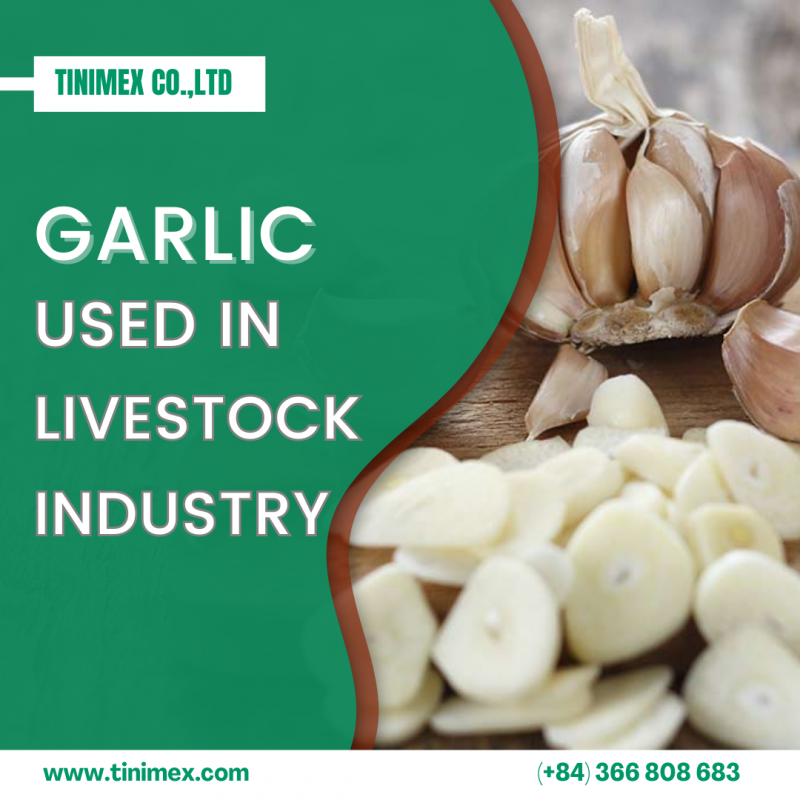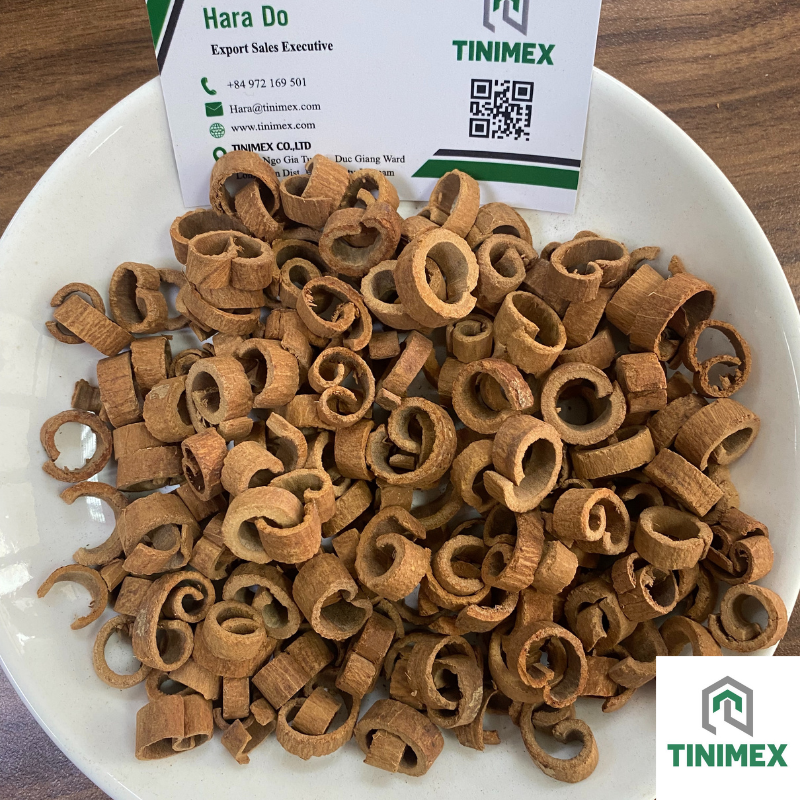Garlic Used In Livestock Industry: As an antibacterial feed additive for livestock
Introduction: Garlic Used In Livestock Industry
As the global agricultural industry searches for sustainable and effective alternatives to synthetic antibiotics in livestock feed, garlic (Allium sativum) has emerged as a remarkable natural solution. Particularly in China and India, two of the world’s largest producers and consumers of livestock products, garlic is increasingly recognized not just as a culinary staple but as a functional feed additive with potent antibacterial properties.
This article explores the science, benefits, market trends, and application of garlic in the animal nutrition sector, with a focus on its role in enhancing animal health, reducing antibiotic resistance, and supporting sustainable farming practices.

1. Garlic Used In Livestock Industry: As an Animal Nutrition
Rising Demand for Natural Alternatives
The use of antibiotics as growth promoters in animal feed has raised serious public health concerns, primarily due to the emergence of antibiotic-resistant bacteria. In response, global markets are shifting toward plant-based feed additives that support animal health without compromising food safety. Garlic, rich in organosulfur compounds like allicin, has attracted attention for its natural antibacterial, antifungal, antiviral, and antiparasitic properties.
Leading Adopters: China and India
Both China and India, with their booming livestock sectors and ancient traditions of herbal medicine, have embraced garlic as a feed additive. The integration of garlic powder, garlic oil, and fermented garlic extracts in feed formulations has seen rapid expansion, driven by both government policies and consumer demand for antibiotic-free meat and dairy products.
2. The Science Behind Garlic Used In Livestock Industry
Garlic owes its antimicrobial properties to allicin, a sulfur-containing compound released when garlic is crushed or chopped. Allicin exhibits a broad spectrum of antibacterial activity, particularly against:
- Salmonella spp.
- Escherichia coli (E. coli)
- Staphylococcus aureus
- Clostridium perfringens
These pathogens are common in intensive animal farming and can significantly affect the health and productivity of poultry, swine, and ruminants.
Mode of Action
Allicin acts by inhibiting bacterial enzymes, damaging microbial cell walls, and disrupting their metabolic functions. Unlike synthetic antibiotics, garlic’s natural compounds do not lead to resistance as quickly, making it a safer long-term solution in feed strategies.
3. Benefits of Garlic Used In Livestock Industry
3.1 Enhanced Immunity
Garlic stimulates the innate immune response in animals, boosting their natural defenses against infections. It enhances white blood cell activity, promotes phagocytosis, and increases cytokine production, which contributes to overall resilience in livestock.
3.2 Improved Digestive Health
Garlic supports gut health by promoting the growth of beneficial gut microflora, such as Lactobacillus spp., while suppressing harmful bacteria. This leads to:
- Better nutrient absorption
- Reduced incidence of diarrhea
- Enhanced feed conversion ratio (FCR)
3.3 Odor Reduction and Environmental Benefits
Garlic helps minimize the emission of ammonia and other noxious gases from animal waste. This not only improves barn hygiene and animal welfare but also reduces the environmental footprint of livestock farms.
3.4 Growth Promotion
Although not as aggressive as synthetic growth promoters, garlic contributes to steady and healthy weight gain in livestock, attributed to its anti-inflammatory and metabolic-boosting properties.
4. Forms of Garlic Used In Livestock Industry

The method of processing garlic influences its bioactive potency. Here are the most common forms:
a. Garlic Powder
- Easy to mix with feed
- Moderate concentration of allicin
- Long shelf life
b. Garlic Oil
- High concentration of active compounds
- Used in microencapsulated form for better stability
- Suitable for premix and pellet feeds
c. Fermented Garlic Extract
- Rich in bioavailable nutrients and postbiotics
- Enhances palatability
- Shows synergistic effects with probiotics
5. Application Of Garlic Used In Livestock Industry
Poultry
In broilers and layers, garlic supplementation improves:
- Weight gain and feed efficiency
- Egg production and yolk quality
- Disease resistance, especially against coccidiosis and salmonellosis
Swine
In pigs, garlic contributes to:
- Improved gut health and appetite
- Reduced risk of respiratory and gastrointestinal infections
- Better meat quality with reduced fat content
Ruminants
Cattle and goats benefit from:
- Reduced methane emissions
- Improved milk yield and quality
- Enhanced rumen fermentation and fiber digestibility
6. Garlic Used In Livestock Industry: Market Trends and Business Opportunities
Global Growth
The global market for natural feed additives is projected to reach USD 2.5 billion by 2030, with garlic-based products occupying a significant share. Key factors driving demand include:
- Rising awareness of antibiotic-free animal products
- Government regulations against synthetic additives
- Growth of organic and sustainable farming
Export Potential
Countries like Vietnam, Thailand, and Egypt with abundant garlic production have strong potential to export garlic-based feed ingredients to China, India, and Southeast Asia. Exporters can gain a competitive edge by offering:
- High-allicin varieties
- Standardized and certified products
- Custom feed formulations

7. Regulatory Considerations When Make Garlic Used In Livestock Industry
While garlic is generally recognized as safe (GRAS), exporters and feed manufacturers should be aware of:
- Maximum Residue Limits (MRLs)
- Labeling requirements for organic and non-GMO claims
- Compliance with import regulations in target markets (e.g., China’s Ministry of Agriculture and India’s FSSAI)
8. How to Incorporate Garlic Into Your Feed Strategy
Step-by-Step Guide
- Assess the livestock type and health challenges
- Choose the right garlic form (powder, oil, extract)
- Determine the optimal dosage (typically 1–3% of feed)
- Integrate gradually into feed rations to monitor adaptation
- Track performance indicators like weight gain, FCR, and mortality
Best Practices
- Store garlic products in cool, dry environments
- Combine garlic with other natural additives like oregano oil, cinnamon, or probiotics for synergistic effects
- Consult veterinary nutritionists to fine-tune formulations
Conclusion: Partner with a Trusted Supplier
In a world moving rapidly toward sustainable agriculture and antibiotic-free animal husbandry, garlic stands out as a versatile, powerful, and natural feed additive. Its use in China and India showcases the scalability and effectiveness of this humble crop when used wisely.
If you’re seeking a trusted supplier of high-quality agricultural products, including garlic feed additives, partner with a company that understands both the science and the global market.
Contact TINIMEX Co., Ltd.
As a professional Vietnamese exporter of agricultural and feed-grade products, TINIMEX is committed to delivering the highest quality garlic ingredients tailored for the livestock and animal nutrition industry worldwide.
TINIMEX Co., Ltd.
📍 4th Floor, 40 Ngo Gia Tu Street, Duc Giang Ward, Long Bien District, Hanoi, Vietnam
📞 (+84) 366 808 683
📧 info@tinimex.com
🌐 www.tinimex.com
Let TINIMEX be your bridge to safe, effective, and natural solutions for modern animal nutrition.



